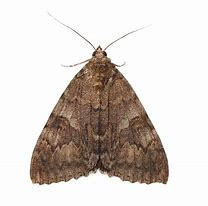Review of Delta Wing History and Science in AWE Context
Re: Review of Delta Wing History and Science in AWE Context
Bingo, this is a 1966 NASA delta-wing reference that accurately presents delta vortex lift insight, with close agreement of formal prediction and experimental data. Most pertinent is the data over a wide AR range. Kiter's know that the right-triangle delta is the best overall trade-off between higher and lower AR (~AR3), and here we have numbers to help explain that. Up to a point, higher AR boosts Cl helpfully, but once AR goes too high at high AoA, a wing becomes too unstable to effectively control, and Cl starts to drop again. At zero AoA, there is no vortex lift. For AWES, the widest possible match of variable load and wind conditions is enabled by vortex lift. Highest steady-state L/D is not as compliant a basis for kite power.
NASA Technical Note TN D-3767
A CONCEPT OF THE VORTEX LIFT OF SHARP-EDGE DELTA WINGS BASED ON A LEADING-EDGE-SUCTION ANALOGY
By Edward C. Pohamus, Langley Research Center, Langley Station, Hampton, Virgina
December 1966
Re: Review of Delta Wing History and Science in AWE Context
State of the art simulation graphics-
At this high AoA, without a large empennage, a high-AR flying wing would be dangerously unstable.

Review of Delta Wing History and Science in AWE Context

Many traditional
Asian kites are delta or diamond shaped, so the design history goes far
back. In the case of insects, many moths have an iconic delta posture
visible at rest and applied in evasive flight. The modern delta kite is
the perfection of the architype. In formal AWE aerodynamic research,
the delta has been largely overlooked in favor of long conventional
wings. Current Vortex Lift Aerodynamic Parameter discussion fills gaps
in the advancing kite engineering science. Wikipedia continues to
advance as well, consistent with many early AWES Forum insights: On
Delta Wings-
"(Delta wings)
proved suitable for high-speed subsonic and supersonic flight. At the
other end of the speed scale, the Rogallo
flexible wing proved a practical design for the hang
glider and other ultralight
aircraft...The delta form brings unique structural advantages and
aerodynamic characteristics...The
long root chord of the delta wing, and minimal structure outboard, make
it structurally efficient. It can be built stronger, stiffer and at the
same time lighter than a swept wing of equivalent lifting capability.
Because of this it is easy and relatively inexpensive to build...As
the angle
of attack increases,
the leading edge of the wing generates a vortex which
energizes the flow on the upper surface of the wing, delaying flow
separation, and giving the delta a very high stall angle.[1] A
normal wing built for high speed use typically has undesirable
characteristics at low speeds, but in this regime the delta gradually
changes over to a mode of lift based on the vortex it generates, a mode
where it has smooth and stable flight characteristics. "

|
|